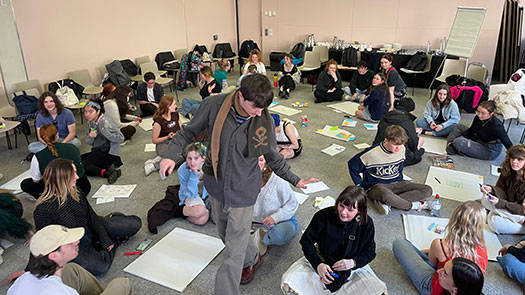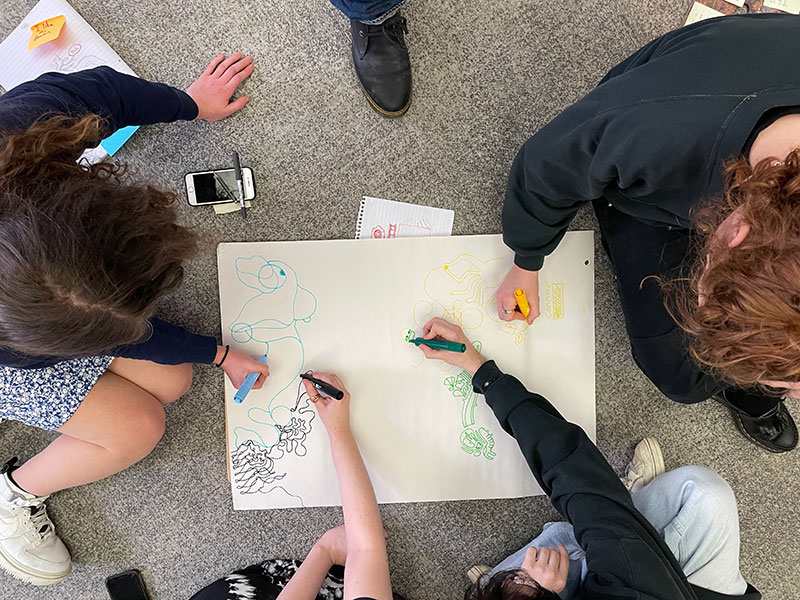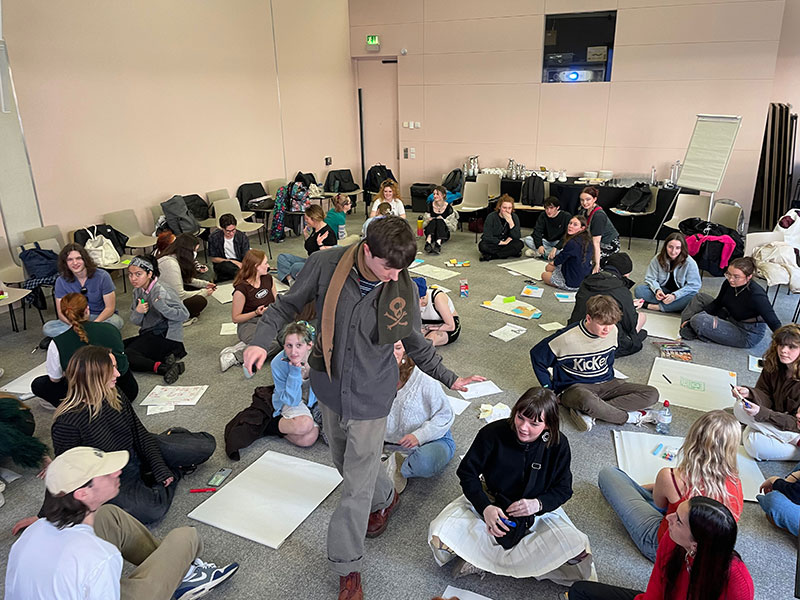Project 11
Art Agents: Imagining New Futures
With Manchester Art Gallery and The British Art Show 9
Our students have been working with Manchester Art Gallery (MAG) on their commission Art Agents – part of British Art Show 9 (BAS9), the definitive survey exhibition of contemporary art in the UK. Interdisciplinary groups of students have developed proposals for social practice, one or more of which will be realised by MAG as part of their programme during BAS9’s visit to the city this summer. It has provided our students with a chance to see the working of a major art institution up close during the frenetic phase of activity prior to a major exhibition, and insight into the collaboration of curatorial and education teams. It has also given them valuable experience of developing pitches and proposals for funding. MMU staff have supplied a rich strand of lecture content, drawing on our art historical and performance expertise. We also fitted in a splendid day out to visit BAS9 in its Wolverhampton incarnation, courtesy of our MAG partners.
The wider Art Agents commission, of which our project forms one part, involves MAG and its BAS9 partner institutions in the city making links with different communities via community-generated projects. The subtitle of our option, ‘Imagining New Futures’, is one of the central, social themes that underpin BAS9, but as the project has progressed it has become clear that another of those themes is more apt: ‘Tactics for Togetherness’. The question of what binds us has been central. We’ve been lucky to have had Suzanne Lacy’s work available to us during the project, in the recently concluded retrospective at the Whitworth and the linked projects on display at MAG, Uncertain Futures and Cleaning Conditions. However, the lengthy development time of Lacy’s projects, and the deep rapport she seeks to build with the groups with whom she works, are clearly not feasible for us under Unit X’s timescale. The challenge has been to bootstrap community groups and projects from a standing start, over a short period. To that end, we asked our students to first form ad-hoc groupings and identify common ground among group members which could serve as a basis for a socially-engaged art project. Students were asked to think about the communities they are part of, and a need that a project could address. We’ve been delighted with the results – some of which will be realised this summer. But more significantly, this is about introducing social practice as a field to our students, building capacity in the city and helping MAG identify social practitioner partners for the future.
Keywords: Multi-Disciplinary, Socially Engaged, Community-led Practice, Film, Photography, Performance, Fashion, Textiles and Craft, Art History, Curation, Exhibition Proposal, Commissioning, Museums , Galleries, Communities


